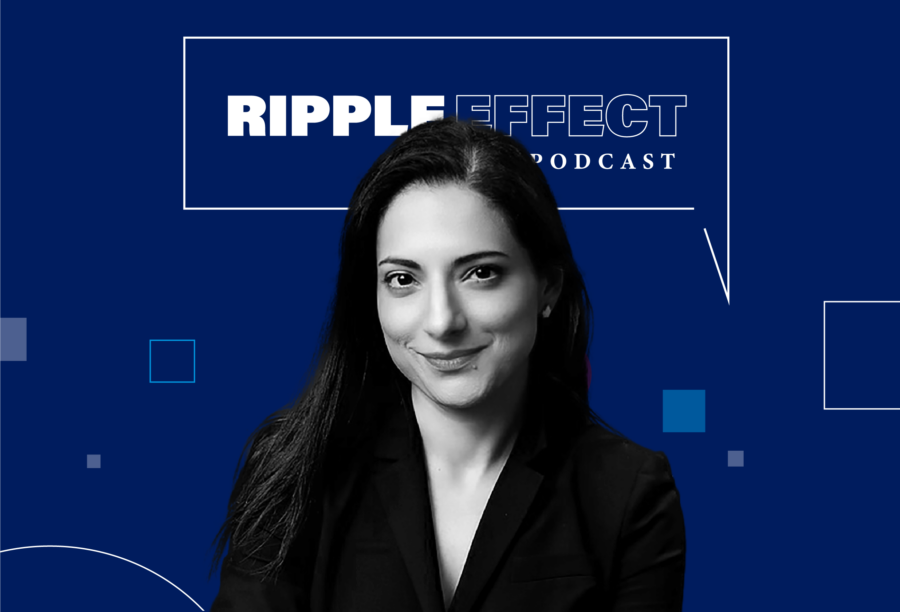Wharton’s Pinar Yildirim untangles the relationship between charitable and political giving, which are both on the rise. This episode is part of a series on “Charitable Giving.”
Transcript
How Does Charitable Giving Impact Political Giving?
Dan Loney: The fall of 2024 will be remembered as a unique time around the area of charitable and political giving. We are seeing a high level of political giving right now with the presidential election year, but you also have disasters like Hurricane Helene. The question is, does one impact the other?
It’s a pleasure to be joined here in studio by Pinar Yildirim, associate professor of marketing here at the Wharton School. She’s been part of research looking at the correlation between these two types of giving. Pinar, your research shows that there is an impact. Take us through what you found out.
Pinar Yildirim: We see significant amounts of money go into political donations. And naturally, we ask this question: Why is so much money going into politics? What motivates people to give to politics? And can we explain that maybe in relationship to charitable giving, which we know a lot more about?
It’s an important year. When we look at the numbers, we see them going up compared to the previous years. For example, if you were to just look at the 2016 election year, the presidential candidates were collectively able to collect about $440 million in the first 12 months of the campaign. That number more than doubled in the 2020 election, going over $1.1 billion. In general, we are seeing this trend for political giving.
We also see similar trends if you look at charitable donations. In 2023, there was about $550 billion in charitable giving. That number is a significant hike compared to what we used to see 10, 15 years ago. For example, in 2010, we saw about $300 billion going into charitable giving. We wanted to understand the motivations for the giving. At the same time, if we start seeing an increase in one type of giving, what might be the impact on the other form of giving? That’s what we wanted to study.
Loney: Part of the research focused on giving to the American Red Cross, correct?
Yildirim: Yes, this primary data was coming from the American Red Cross. But we did look at donations to other organizations as well. The first thing we wanted to do is to understand how the two types of donations move relative to each other. In an ideal scenario, you would be able to randomly just move donations going into one cause and then see the impact on the other. But in the real world, of course, being able to see these effects in random ways is almost impossible. So, we looked at events that happen in the world that almost randomly, or in a random-like fashion, increase the motivations to give to one type of cause. Then we can look at the effects on the other.
For natural disasters, these events typically happen in very unexpected ways, and their devastation is usually not calculable in advance, especially foreign disasters. They can act as reminders to give to charity, or how important donations to charitable organizations might be at the time of giving. These events get ample amounts of coverage on media, and therefore could increase the motivations for giving to charity, at least in temporary ways.
So, we took advantage of foreign natural disasters, large disasters, and we looked at the increase in the American Red Cross donations around the time of or in the weeks that follow these events. At the same time, we looked at the Federal Elections Commission data on political donations.
What we have seen was in the roughly six weeks that follow a large foreign natural disaster, you see about a 34% to 35% increase in American Red Cross donations. And the corresponding decline in the political donations is about 18% to 19%. Just to summarize that, again, we see an increase in charitable giving or disaster response giving, and then we see a decline in the political donations.
Loney: Does it happen to go the reverse way?
Yildirim: We also wanted to understand the flip side of the coin. If we start seeing, for example, events that motivate giving to politics, do we see a response in charitable giving as well? Again, finding events that will randomly increase the motivations to political giving is somewhat hard. But we can look at events that impact individuals or voters in ways that are almost random.
For example, we can look at political advertising. We took advantage of some of the characteristics or institutional features of political giving or the media markets in general. In the United States, if you want to buy advertising, especially TV advertising, you buy them by focusing on geographic areas that are called designated market areas, DMAs. These are areas that are defined by the company Nielsen. The boundaries of these markets are typically independent of the administrative boundaries. What that means is two individuals could be living on two opposite sides of a designated market area boundary, and they could receive very different amounts and very different types of political ads.
We take advantage of those boundaries. We do a comparison of the individuals who fall — again, somewhat randomly — on two sides of that boundary, and compare how someone who might have been exposed to higher levels of political advertising might be increasing or changing their giving to politics. And at the same time, we compare how that person responds in charitable giving.
What we see is about a 10% increase in the political ad spending. Political ad spending typically determines what you can buy in a market area. A 10% increase roughly corresponds to about a 0.2% increase in giving to politics. And at the same time, a 0.4% decline in giving to charity. So, the amounts look slightly different in terms of the magnitudes. But if you actually do a comparison of how charitable giving responds to an increase in political events, and then do the opposite— how political giving responds to these charitable or disaster events — we see somewhat comparable responses.
Why Are People Donating More Money in Recent Years?
Loney: You mentioned the historical numbers in terms of total giving. Do people feel like their money has more of an impact now than maybe they did 20, 30 years ago? Or is it just the funds that we have available to us, that we’re willing to give to either case? Whether it be political, whether it be a charitable donation.
Yildirim: If we reframe your question, I think we should ask what might be the motivation to giving? Or what might be explaining, potentially, the substitution that we observe? One simple explanation could be that people have limited budget. And as they start giving to one cause, they start decreasing the amount for another cause. There could be some individuals who, indeed, just because of budgetary considerations, start giving to one cause and start taking away from the other one.
While we cannot rule out individuals giving because of budgetary considerations, one thing we have done is we looked at spending in other categories. For example, we looked at retail spending, we looked at grocery spending. We looked at buying lottery tickets, which is not something that you have to do, right? It’s something that you can decide to buy.
We did not see the same response. When we look at, for example, the increase in charitable giving, you do not see a decline in the spending items of these sorts. Therefore, we think that the substitution that you observe should not be solely explainable by the budget considerations, but there could be other motivations that are driving the pattern.
One potential explanation relates to charitable giving. When you look at motivations for charitable giving, typically, the literature will put those motivations in two very broad buckets. One is the idea that, “I’m very altruistic. I really want the betterment of others. I care about the welfare of others, and therefore I give.”
The other set of motivations typically fall under impure altruism, or what the economists and the academics like to call “warm glow.” “I give because it makes me feel good.” Or, “I give because I get some kind of status out of giving.” Maybe I’m recognized as a donor somewhere, or I feel good about myself because I do something good for others. For the individuals who are giving primarily because of the impure altruism or warm glow, you don’t really care if the money that you’re giving is helping others to recover from a disaster or doing something else.
If the primary motivation is warm glow, you could feel better about yourself giving to charity. And you might get a similar enjoyment, similar utility out of giving to politics as well. So if motivations are warm glow, we could potentially explain why people give to to one cause versus the other.
Loney: The political cycle is unique because it’s not just the day or the week before the election. It’s a long run-up process to get to that point. I’m wondering if it has a longer impact, potentially to the detriment of the charitable organization, that they lose out on funds from individuals over a longer period of time because that election cycle is such a longer cycle.
Yildirim: I think there are three separate questions in what you just asked. One is, is there any difference across the time period, for instance, getting closer to the elections? Do we see a different level of impact because of the aggregation in our study of the time periods?
We wanted to look at donation response over a number of weeks. We were not able to observe these types of differences. But I could speculate that if we are sending more reminders about the importance of donating to politics, or if we are elongating the periods over which people are constantly reminded of the need to give to politics, that could have a negative impact on the nonprofits that are trying to raise money for charitable causes as well as the victims of these disasters. Because they’re not going to be able to receive the same level of funds that they could have received otherwise.
Why Is It Important to Understand Charitable and Political Giving?
Loney: What were your most important takeaways in looking at these components of giving from the outside?
Yildirim: First, we want to understand the motivations to giving to politics, because this is not entirely clear. It’s relatively understudied compared to charitable giving. We understand the motivations to give to charitable giving, but we don’t know what political donations are really for. Some researchers suggest that people give because they expect something in return. This is an instrumental motivation. You’re donating because maybe you think that the politician will return that favor in the future.
Others suggested that people give because they think it’s their civic duty. Others suggested that people give because they get some consumption value out of that. So, there could be different explanations as to why people give. But it’s important to underline the common elements with charitable giving. And I think that’s one of the first things that we do. We see is that these forms of giving are substitutes.
The second important takeaway for us is the relative negative impact of these two forms of giving on the other. We are observing that if there is an event that drives charitable giving, disaster giving in particular, we will see a negative impact on political donations. And that’s not just coming from the budget effect. That seems to come from other factors as well, just like the warm glow effects that motivate people for giving. To quantify that, we see that if there is an increase of $1 that goes to charitable giving, that results in about a 42-cent decline in political donations.
Looking at the other side, we also see that political events that drive political giving could have a negative impact on charitable donations, and that could be potentially a negative outcome for both nonprofits as well as disaster victims. To quantify that effect, we see that if events that drive political donations result in a $1 increase, that corresponds to about a 33-cent decline to charitable giving. It’s a sizable amount. And I think we need to be aware of these potential responses that come from the other causes of giving.
A third thing that we discuss at the end of our study is this question about the effect of money in politics. I mentioned that the political donations are increasing. A nontrivial amount of those donations come from individual donors, and that seems to have increased over the last election cycles as well. Should we rethink the policies that restrict giving to politics? Is this too much money? And if there’s too much money or too many political donations, does that really change the electoral dynamics in some way? Could it be potentially benefiting some politicians more than others?
In discussing this topic, we care about a concept called incumbency advantage. In brief, it just simply describes this idea that politicians who have access to resources, who have been in an office before, who are an incumbent, tend to get re-elected again and again. When you look at the United States elections, as well as in other countries, we don’t like the idea of incumbency advantage too much unless the incumbent gets elected again and again because they are the better candidate. We don’t like it if it’s coming from some resource advantage, because that means we have less competitive elections. And some of the really good candidates, potentially high-quality politicians, may not be able to get elected.
Looking at the question of small and large amounts of money that go into donations, and how that potentially influences incumbency advantage, that’s also something that we do in this study. And here, disaster events are really useful, because they create an exogenous or unexpected change in the money that goes to politics. Therefore, we can look at the response in terms of the electoral chances of incumbents and challengers.
Perhaps surprisingly, or at least differently from some of the earlier studies in the literature, we find that actually more money in politics is not necessarily bad. When we look at the chances of getting elected by an incumbent as well as a challenger, we see that if we can increase the total pot of money — that is, if we can have more donations, more money going into politics— we are able to increase the chances of a challenger getting elected. About a 10% increase in donations results in about a 3.6 percentage point increase in the chances of a challenger getting elected. Which, again, if we believe in more competitive elections where everybody has the chance to go and run and get elected, should be a positive outcome for the society.



